1. Bulky Residential-Style Furniture

It might feel tempting to replace your RV’s lightweight dinette with a plush sectional from your favorite furniture store, but this can backfire quickly. Heavy furniture eats into your weight allowance, which is crucial for safety and fuel efficiency. It also often doesn’t fit RV dimensions properly, making it harder to walk through or access storage areas. The result? You end up with less usable space and more weight than your axles are happy about.
Another issue is that residential furniture isn’t designed for the bumps, sways, and vibrations of travel. The frames and joints may loosen faster, leading to squeaks and wobbles on the road. Securing bulky pieces can be a nightmare, requiring extra straps or bolts that still may not hold during sudden stops. In the end, you’ve swapped lightweight practicality for a maintenance headache.
2. Carpeted Floors

A plush carpet might seem cozy, especially on chilly mornings, but in an RV, it quickly becomes a dirt magnet. You’re tracking in sand, mud, and dust far more often than in a house, and vacuuming daily becomes the only way to keep it tolerable. Carpets also trap moisture, which can lead to mold or mildew if you’ve been camping somewhere damp. All of that makes it a high-maintenance “upgrade” that can harm air quality.
Plus, carpets are tricky to fully clean when spills happen — and in an RV, spills happen a lot. Pets, kids, and the occasional clumsy adult all contribute to stains that seep deep into the fibers. Over time, that cozy carpet starts to smell less like “home” and more like “old gym bag.” A hard surface floor with washable rugs is often the far better choice.
3. Overly Complex Smart Home Systems
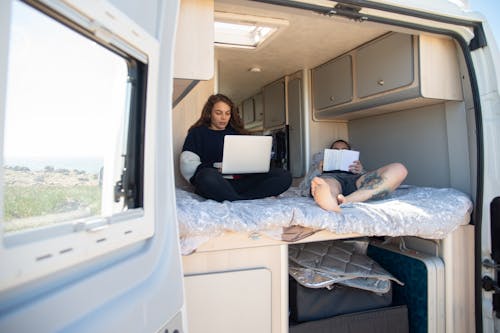
Turning your RV into a tech marvel with app-controlled lights, blinds, and HVAC can sound like the height of convenience. But when you’re in the middle of nowhere and the Wi-Fi drops, those “upgrades” can quickly become “downgrades.” Manual switches are reliable because they don’t depend on a network or battery charge to work. In an RV, reliability beats flashiness every time.
Even when they work perfectly, overly complex systems add another layer of things that can break. Repairs often require specialized parts or software updates that aren’t easy to get on the road. If you’re boondocking, these systems can also quietly drain your battery faster than you expect. Suddenly, your cozy weekend trip turns into a troubleshooting session with a customer service rep.
4. Huge Residential Refrigerators
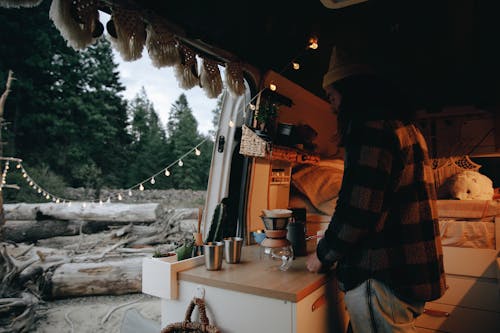
A full-size fridge might seem like a dream for stocking up on groceries, but it’s not always the win you think it is. They often require more power than an RV’s electrical system can comfortably provide, especially if you camp off-grid. That means you might end up running your generator more often, burning fuel and making noise. Plus, their size can dominate your kitchen layout, leaving less counter space.
There’s also the travel factor — big fridges are heavier and can strain your slide-outs if they’re mounted there. In smaller rigs, they may even block access to other areas when the slide is in. Repairs are pricier, too, since RV service centers may not stock parts for residential models. You might find that a high-efficiency RV fridge is far better suited for life on the road.
5. Fancy Vessel Sinks
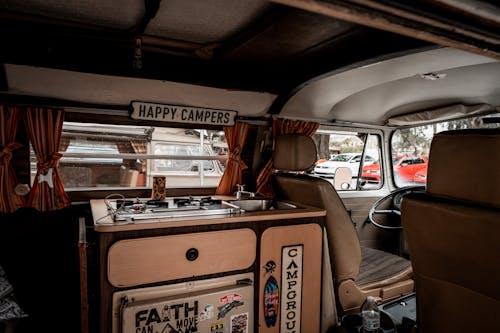
Those elegant bowl-style vessel sinks look amazing in Instagram photos, but they’re not exactly road-trip friendly. They sit higher than standard sinks, which can make them awkward to use in the tight quarters of an RV bathroom. They also tend to splash more, leaving water on your counter and floor. Over time, that extra moisture can cause damage in such a small, enclosed space.
They’re also more fragile during travel, especially if they’re made of glass or ceramic. Even a well-padded sink can crack if the RV hits a big bump or pothole. Cleaning around and underneath them is trickier, too, since debris and soap scum collect in the narrow gap between the bowl and countertop. That “modern spa” vibe quickly turns into “constant cleanup.”
6. Heavy Tile Backsplashes

A tile backsplash can give your RV kitchen a high-end look, but weight is the hidden enemy here. Ceramic and stone tiles add surprising pounds to your walls, and every extra pound counts in your GVWR limit. The grout can also crack from the vibrations of travel, leading to a constant cycle of repairs. And if the tiles aren’t installed with RV-friendly adhesives, they may simply fall off.
Lightweight peel-and-stick options exist, but even those can have downsides. Heat from cooking or direct sunlight through a window can cause them to peel at the edges. Some adhesives can even leave behind sticky residue that’s tough to remove. In most cases, a lightweight, durable wall covering beats the maintenance needs of real tile.
7. Oversized Entertainment Centers
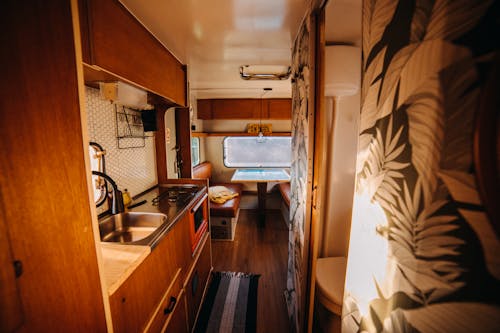
It might seem luxurious to have a giant TV and full surround sound in your RV, but that comes with trade-offs. Large entertainment setups eat into storage space you could use for essentials like clothing, food, or gear. They also draw a lot of power, making them less practical if you enjoy camping off-grid. And let’s be honest — sometimes the best entertainment in an RV is outside.
Bigger electronics also mean more weight and more things that can get damaged on bumpy roads. In tight quarters, a huge screen can feel overwhelming rather than cozy. The extra heat from electronics can make your RV warmer, which isn’t pleasant in summer. Sometimes, a modest setup with a portable projector or small smart TV is the better choice.
8. Excessive Accent Lighting

Color-changing LED strips and elaborate lighting effects can feel fun at first. But once the novelty wears off, you might realize they create more glare than ambiance in a small space. They can also use up battery life faster than you expect if left on for hours. Plus, if they’re cheaply made, they may flicker or develop dead sections.
Another downside is installation — some stick-on strips can damage your walls or cabinetry when removed. If you camp in quiet, natural areas, bright accent lights can also disturb wildlife and other campers. It’s one of those upgrades that sounds good in theory but quickly becomes a source of minor annoyances. In most cases, simple, warm-toned lights do the job just fine.
9. Full-Size Washer and Dryer Units

Having laundry on board sounds incredibly convenient, but residential-sized machines eat up valuable space. They’re heavy, which affects your towing weight and fuel economy. They also draw a lot of water and power, which isn’t ideal if you enjoy boondocking. And if they break, repairs can be costly and hard to arrange on the road.
Smaller RV-specific washer-dryers exist, but they have limits too — long wash cycles and small loads mean you’re often running them constantly. In many cases, using campground laundry facilities is actually less hassle. You avoid dedicating a chunk of your living space to an appliance you might only use occasionally. Sometimes less really is more when it comes to laundry.
10. Glass Shower Doors
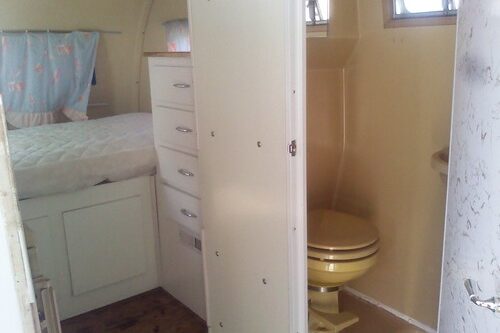
Swapping a plastic curtain for a sleek glass door might feel like a luxury upgrade, but glass is heavy and breakable. The added weight can make your slide-out bathroom harder to manage, and a good jolt on the road could crack the glass. If a seal fails, you might also end up with water leaking into your flooring. In an RV, water damage is one of the most expensive problems you can have.
Glass doors also make cleaning more tedious. Hard water spots and soap scum show up easily, meaning you’re constantly wiping them down. They can also make the bathroom feel more cramped if space is already tight. A good-quality shower curtain is often more forgiving and lighter on both your RV and your nerves.
11. Built-In Microwaves Above Eye Level
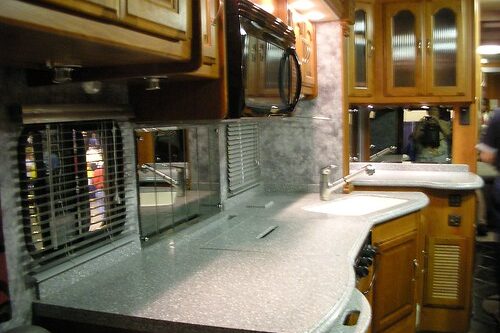
It seems logical to tuck the microwave up high to save counter space, but in an RV, that can be a safety hazard. Pulling out hot food from above your head increases the risk of spills and burns, especially on bumpy ground. If you’re shorter, it’s even trickier — you might need to stand on tiptoe or grab a stool. That’s not exactly safe in a moving vehicle.
There’s also the issue of ventilation — microwaves mounted too high in tight cabinets can overheat if airflow is poor. This can shorten their lifespan and create an unpleasant cooking environment. In many cases, a counter-height or under-counter microwave is far safer and more practical. Function should always come before a “built-in” look in small spaces.
12. Fixed Dining Booths with No Storage

Many RVs come with booth-style dinettes, and some people “upgrade” to more stylish fixed ones — but lose the under-seat storage in the process. That storage is prime real estate for bulky items like bedding, kitchen gear, or seasonal clothes. Giving it up can mean losing a huge chunk of your RV’s hidden capacity. Once it’s gone, you might be cramming items into awkward spots.
Fixed booths can also make it harder to reconfigure your space for different needs. A freestanding table and chairs might give you more flexibility to turn the area into a workspace, extra sleeping space, or open floor area. Without storage and flexibility, you’re left with a space that looks nice but works less. That’s not a great trade in a small home-on-wheels.
13. Overloaded Wall-Mounted Decor
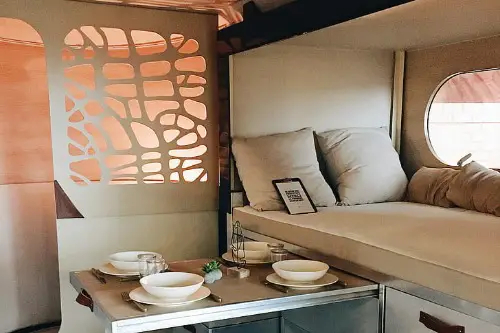
Adding photos, artwork, and shelves can make your RV feel homey, but too much wall decor can cause problems. Every extra frame, hook, or shelf adds weight and can loosen from vibrations. If items aren’t secured properly, they might fall and cause damage while you’re driving. Even soft decorations can become hazards if they block vents or switches.
Too much decor can also make the space feel cluttered, which is magnified in a small interior. In an RV, every inch matters for function and flow. A few carefully chosen pieces that are lightweight and well-secured can achieve the cozy feel without the chaos. Overdoing it just turns your walls into a maintenance project.
This post 13 RV Interior “Upgrades” That Make Living Worse, Not Better was first published on Greenhouse Black.
